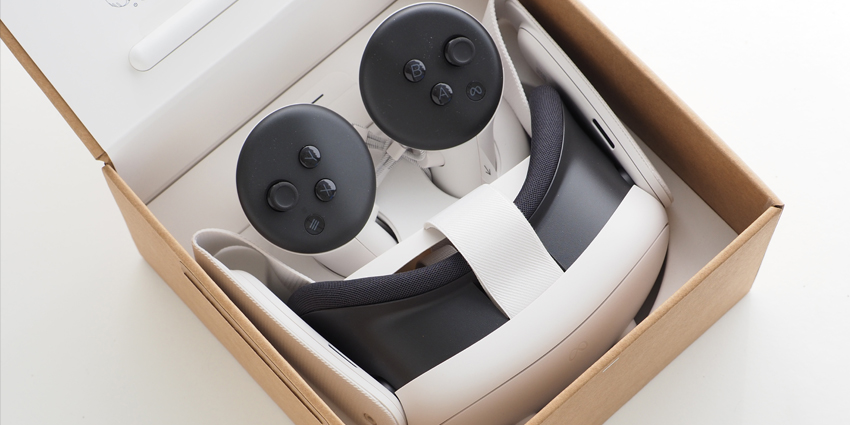Several factors have accelerated the adoption of XR technology in the corporate landscape. Companies have discovered the value of immersive tools for training, customer service, and productivity. However, perhaps one of the biggest use cases for XR in any industry is to improve collaboration and enhance teamwork.
In a world where employees are more distributed than ever before, with 76% of companies confirming a shift to hybrid work schedules, business leaders need a way to keep their teams connected wherever they are. XR can inspire and empower the workforce on a completely different level to any other collaborative solution.
The question is, how do you choose the right XR collaboration tools for your team?
Step 1: Assess Your Use Cases
First, it’s worth thinking carefully about what you want to achieve with XR in your environment. The chances are not everyone in your team will be able to leverage this technology every day. So, think about which of your employees are most likely to experience the most benefits.
Are you looking for ways to bring members of the product design team together over shared “digital twin” prototyping projects? Do you want to improve the connections between shareholders in multiple locations around the world, by helping them to form deeper connections through VR and MR?
XR can assist with everything from improving production times, to cultivating stronger feelings of company culture within the workforce. Knowing exactly what you want to accomplish with your new investment will help you to set goals and track the outcomes of your technology.
Step 2: Consider AR, MR, or VR
While some companies will eventually use a variety of XR technologies in their business as their workflows continue to digitally transform, most organisations will need to start with one specific focus area.
Looking at the use cases you’ve established for your XR collaboration tools, ask yourself what kind of technology is likely to be most beneficial to you.
For instance, if you’re trying to improve connections between stakeholders, support your field-based teams with ongoing specialist support, or facilitate better productivity and performance in the real world, using XR tools which augment and interact with the physical environment is probably a good idea. MR holograms and AR tools can allow your team members to interact with digital content and real-world scenarios at the same time.
Alternatively, if you’re trying to cultivate group bonding moments, provide immersive training experiences, or bring your team members together in a shared environment to work on virtual versions of product designs, you may prefer to explore VR.
Step 3: Consider Integrations and Existing Tools
If you’re bringing XR into the collaboration strategy of your team, the chances are you’re adding this new technology to a series of other tools your employees rely on every day. This could include everything from communication tools like Microsoft Teams, to CAD and design software.
Before you begin choosing XR hardware and software to empower your collaborative teams, you’ll need to decide what kind of tools you’re going to need your new ecosystem to align with.
Some solutions already come custom-made to work with applications like Microsoft Teams or leverage the various features of tools like Autodesk.
If you need to ensure your solution can work with a wide range of specific tools, you may need to consider working with a specialist vendor capable of constructing something to suit your needs.
Don’t’ forget, it’s also worth thinking about the environment you’re going to be embedding your XR tools into. Are there any specific concerns like humidity or extreme temperatures to be aware of?
Step 4: Consider Your Hardware Options
Once you’ve looked at your use cases, chosen a flavor of XR for your collaborative strategy, and considered the existing technology your system needs to integrate with, you can begin to think about hardware.
The exact hardware solutions you’ll need will depend heavily on how you plan on using your new technology, and what kind of XR innovation you’re using.
For instance, if you’re going to be implementing MR solutions to help create holographic experiences for stakeholders, you may need a combination of headsets, projectors, and other endpoint tools. If you’re going to be immersing your teams in a VR experience, you’ll need to think about things like sensors, spatial sound, and even haptic feedback, as well as headsets.
With AR, you can explore options like smart glasses and smartphone applications. Consider whether you need your users to be able to access your software on desktop devices and mobiles, as well as dedicated pieces of equipment.
Step 5: Explore Software Options
The hardware solutions you choose will have an impact on the kind of software you can implement for your XR collaborative experience.
You’ll need to think about whether you need to bring specific features and tools into the XR environment, by working with a developer or designer to build something from scratch, or whether you can access pre-existing applications.
There are a number of leading vendors in the XR environment offering specialist programs for companies in a range of different industries. However, it’s worth noting not every software solution will work with every headset.
For a lot of companies, the key to success will often be working with a vendor or developer who can design a solution specifically suited to their headset of choice, and the use cases they’ve already identified. Even if you find a pre-existing software solution you want to use, you may still need to work with developers on creating things like digital twins and avatars.
Get Ready to Experiment
As the world of XR collaboration continues to unfold, comparing potential vendors and technology solutions is likely to be an experimental experience. Many companies will benefit from interacting with vendors and exploring demos of different software and headset choices.
You may even find it helpful to create a team of early adopters and “beta testers” in your workforce responsible for exploring your options, and implementing the most effective solutions.







